Photo

50 years ago, three Apollo astronauts rode this 363 foot tall rocket, the Saturn V, embarking on one of the greatest missions of mankind – to step foot on another world. On July 20, 1969, astronauts Buzz Aldrin, Michael Collins and Neil Armstrong made history when they arrived at the Moon. Thanks to the Saturn V rocket, we were able to complete this epic feat, returning to the lunar surface a total of six times. The six missions that landed on the Moon returned a wealth of scientific data and almost 400 kilograms of lunar samples.
In honor of this historic launch, the National Air and Space Museum is projecting the identical rocket that took our astronauts to the Moon on the Washington Monument in Washington, D.C.
This week, you can watch us salute our Apollo 50th heroes and look forward to our next giant leap for future missions to the Moon and Mars. Tune in to a special two-hour live NASA Television broadcast at 1 p.m. ET on Friday, July 19. Watch the program at www.nasa.gov/live.
Make sure to follow us on Tumblr for your regular dose of space: http://nasa.tumblr.com.
3K notes
·
View notes
Text
“The most merciful thing in the world, I think, is the inability of the human mind to correlate all its contents. We live on a placid island of ignorance in the midst of black seas of infinity, and it was not meant that we should voyage far. The sciences, each straining in its own direction, have hitherto harmed us little; but some day the piecing together of dissociated knowledge will open up such terrifying vistas of reality, and of our frightful position therein, that we shall either go mad from the revelation or flee from the light into the peace and safety of a new dark age.”
— H. P. Lovecraft (via inthenoosphere)
271 notes
·
View notes
Text
“Pure mathematics is just such an abstraction from the real world, and pure mathematics does have a special precise language for dealing with its own special and technical subjects. But this precise language is not precise in any sense if you deal with real objects of the world, and it is only pedantic and quite confusing to use it unless there are some special subtleties which have to be carefully distinguished.”
—
Richard Feynman

Born this day 101 years ago.
441 notes
·
View notes
Text
What Can We Learn from the Universe’s Baby Picture?
If you look at your baby photos, you might see hints of the person you are today — a certain look in the eyes, maybe the hint of your future nose or ears. In the same way, scientists examine the universe’s “baby picture” for clues about how it grew into the cosmos we know now. This baby photo is the cosmic microwave background (CMB), a faint glow that permeates the universe in all directions.
In late September, NASA plans to launch a balloon-based astronomical observatory from Fort Sumner, New Mexico, to study the universe’s baby picture. Meet PIPER! The Primordial Inflation Polarization Explorer will fly at the edge of our atmosphere to look for subtle patterns in the CMB.
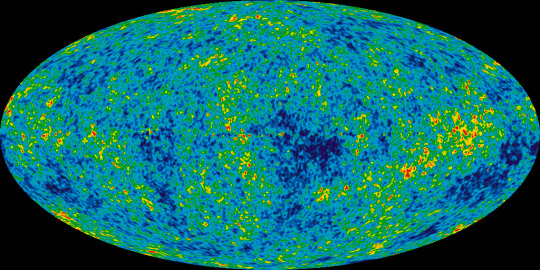
The CMB is cold. Really, really cold. The average temperature is around minus 455 degrees Fahrenheit. It formed 380,000 years after the big bang, which scientists think happened about 13.8 billion years ago. When it was first discovered, the CMB temperature looked very uniform, but researchers later found there are slight variations like hot and cold spots. The CMB is the oldest light in the universe that we can see. Anything before the CMB is foggy — literally.
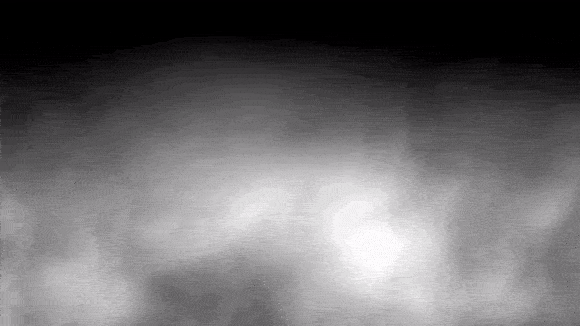
Credit: Rob van Hal
Before the CMB, the universe was a fog of hot, dense plasma. (By hot, we’re talking about 500 million degrees F.) That’s so hot that atoms couldn’t exist yet – there was just a soup of electrons and protons. Electrons are great at deflecting light. So, any light that existed in the first few hundred thousand years after the big bang couldn’t travel very far before bouncing off electrons, similar to the way a car’s headlights get diffused in fog.
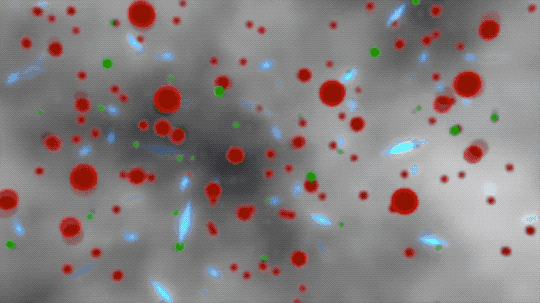
After the big bang, the universe started expanding rapidly in all directions. This expansion is still happening today. As the universe continued to expand, it cooled. By the time the universe reached its 380,000th birthday, it had cooled enough that electrons and protons could combine into hydrogen atoms for the first time. (Scientists call this era recombination.) Hydrogen atoms don’t deflect light nearly as well as loose electrons and the fog lifted. Light could now travel long distances across the universe.

The light we see in the CMB comes from the recombination era. As it traveled across the universe, through the formation of stars and galaxies, it lost energy. Now we observe it in the microwave part of the electromagnetic spectrum, which is less energetic than visible light and therefore invisible to our eyes. The first baby photo of the CMB – really, a map of the sky in microwaves – came from our Cosmic Background Explorer, which operated from 1989 to 1993.
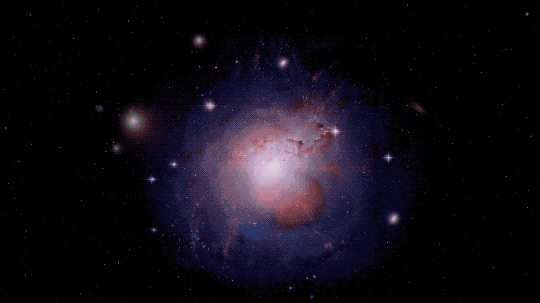
Why are we so interested in the universe’s baby picture? Well, it’s helped us learn a lot about the structure of the universe around us today. For example, the Wilkinson Microwave Anisotropy Probe produced a detailed map of the CMB and helped us learn that the universe is 68 percent dark energy, 27 percent dark matter and just 5 percent normal matter — the stuff that you and stars are made of.

Right after the big bang, we’re pretty sure the universe was tiny. Really tiny. Everything we see today would have been stuffed into something smaller than a proton. If the universe started out that small, then it would have followed the rules of quantum mechanics. Quantum mechanics allows all sorts of strange things to happen. Matter and energy can be “borrowed” from the future then crash back into nothingness. And then cosmic inflation happened and the universe suddenly expanded by a trillion trillion times.
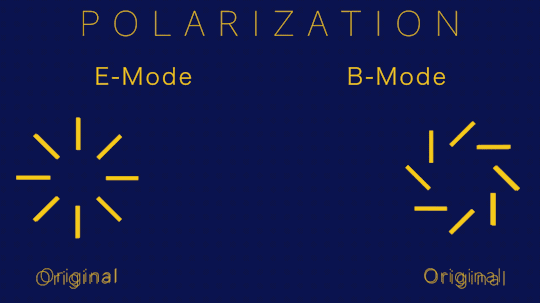
All this chaos creates a sea of gravitational waves. (These are called “primordial” gravitational waves and come from a different source than the gravitational waves you may have heard about from merging neutron stars and black holes.) The signal of the primordial gravitational waves is a bit like white noise, where the signal from merging dead stars is like a whistle you can pick up over the noise.
These gravitational waves filled the baby universe and created distinct patterns, called B-mode polarization, in the CMB light. These patterns have handedness, which means even though they’re mirror images of each other, they’re not symmetrical — like trying to wear a left-hand glove on your right hand. They’re distinct from another kind of polarization called E-mode, which is symmetrical and echoes the distribution of matter in the universe.
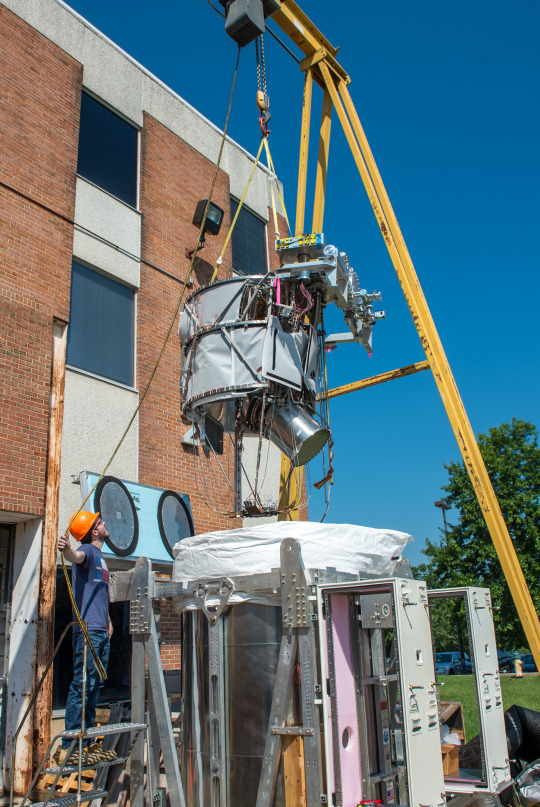
That’s where PIPER comes in. PIPER’s two telescopes sit in a hot-tub-sized container of liquid helium, which runs about minus 452 degrees F. It’ll look at 85 percent of the sky and is extremely sensitive, so it will help us learn even more about the early days of the universe. By telling us more about polarization and those primordial gravitational waves, PIPER will help us understand how the early universe grew from that first baby picture.
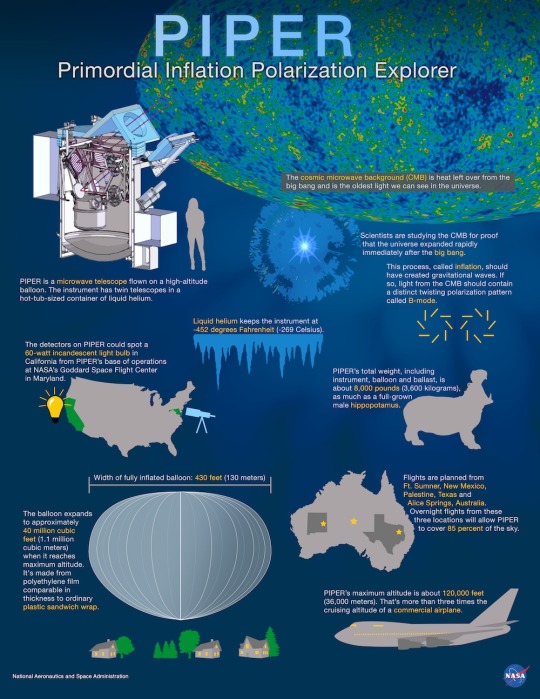
PIPER’s first launch window in Fort Sumner, New Mexico, is in late September. When it’s getting ready to launch, you’ll be able to watch the balloon being filled on the Columbia Scientific Balloon Facility website. Follow NASA Blueshift on Twitter or Facebook for updates about PIPER and when the livestream will be available.
Make sure to follow us on Tumblr for your regular dose of space: http://nasa.tumblr.com.
3K notes
·
View notes
Video
287K notes
·
View notes
Link
168 notes
·
View notes
Text
What makes your knuckles pop?
From Anatomy In Motion

If you’ve ever laced your fingers together, turned your palms away from you and bent your fingers back, you know what knuckle popping sounds like. Joints produce that CRACK when bubbles burst in the fluid surrounding the joint. Joints are the meeting points of two separate bones, held together and in place by connective tissues and ligaments. All of the joints in our bodies are surrounded by synovial fluid, a thick, clear liquid. When you stretch or bend your finger to pop the knuckle, you’re causing the bones of the joint to pull apart. As they do, the connective tissue capsule that surrounds the joint is stretched. By stretching this capsule, you increase its volume. And as we know from chemistry class, with an increase in volume comes a decrease in pressure. So as the pressure of the synovial fluid drops, gases dissolved in the fluid become less soluble, forming bubbles through a process called cavitation. When the joint is stretched far enough, the pressure in the capsule drops so low that these bubbles burst, producing the pop that we associate with knuckle cracking.
Keep reading
217 notes
·
View notes
Video
Ahhh..Maze...Balls!!!
instagram
/-/•|•-
16 notes
·
View notes
Photo

GUYS https://twitter.com/AltNatParkSer/status/824054953404669953 http://www.scientistsmarchonwashington.com/ THE NATIONAL PARK SERVICE IS IN OPEN REBELLION
136K notes
·
View notes
Text
We’re here for you, Scientists. --Love, Journalists.
In the face of communication lockdowns of US scientific agencies, here is my formal invitation for whistle-blowing scientists to contact me. Particularly if the agency for which you work is being censored or threatened and you have something to say. Please share this info.
Regardless of what type of science you do or represent, I can either write about your story or connect you with someone else who specializes in that field. If you need to, you can be anonymous, although it helps to be on the record, and it would also help if you would prove your affiliation/expertise to the news agency itself, at least. I will not publish or reveal your identity without your consent.
I work at the science desk at PBS Newshour in Washington DC, and I’m connected with other science journalists at Nat Geo, Washington Post, and other science news sources, with a wide range of specialties. You can contact me at [email protected]. Or you can text my Google Voice number at (213) 259-3553, regularly or using the Signal app (it’s encrypted.) You can message me through Tumblr too but include offsite contact info if you’re on anon, otherwise I can’t get back to you. I can’t promise that I’ll publish or forward everything; it does need to be newsworthy and at least somewhat verifiable.
Still–scientists, please know that journalists are here to write facts about science. We’re hard to threaten and very protective of the first amendment.
2K notes
·
View notes
Link
0 notes
Photo


Why can we find geometric shapes in the night sky? How can we know that at least two people in London have exactly the same number of hairs on their head? And why can patterns be found in just about any text — even Vanilla Ice lyrics? Is there a deeper meaning?
The answer is no, and we know that thanks to a mathematical principle called Ramsey theory. So what is Ramsey theory? Simply put, it states that given enough elements in a set or structure, some particular interesting pattern among them is guaranteed to emerge.
The mathematician T.S. Motzkin once remarked that, “while disorder is more probable in general, complete disorder is impossible.” The sheer size of the Universe guarantees that some of its random elements will fall into specific arrangements, and because we evolved to notice patterns and pick out signals among the noise, we are often tempted to find intentional meaning where there may not be any. So while we may be awed by hidden messages in everything from books, to pieces of toast, to the night sky, their real origin is usually our own minds.
From the TED-Ed Lesson The origin of countless conspiracy theories - PatrickJMT
Animation by Aaron, Sean & Mathias Studios
236 notes
·
View notes
Video
Just favorited 4-19-2013 202nU Mini Mix by DJ DC Infamous on Mixcloud
0 notes
Photo






Something a little different: the contour lines of Re[arctan(z)] in black and Im[arctan(z)] in white, x,y∈[0, 2π], 29 contours. I’m really happy with how this turned out (and with the thinner border), and I’m definitely going to do more of them, but for most of these trig functions the contour lines don’t go all the way to the edge for one part or the other, so I’ve got some further experimenting to do. Probably with less contours. Hopefully in color. And this one’s for Banj, who was found shot dead in his car last night, who made my favorite weird ass trippy doodle cartoons, who always made me laugh, who was the best 2.5th roommate ever, who was a great guy and a good soul, who was doing something with his life and had people that cared about him, who didn’t deserve to die and die so young just because he was in the wrong place at the wrong time. It’s not fair and it doesn’t make sense. So many people I care about are hurting so badly right now. I loved you to death, bro, and I’ll miss you and treasure your weird doodles always.
215 notes
·
View notes
Photo

Shot taken by the Rosetta space probe shortly before crashing onto Comet 67P.
1K notes
·
View notes

